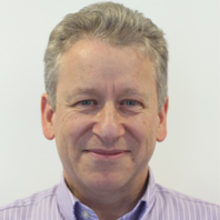From the President
Issue: Future Tech
09 August 2016 article

As the summer months arrive and the academic terms have been wound up, more time may be available for us to complete manuscripts and grant applications. For Microbiology Society staff, Executive Officers and Committee members this is also a period of intense planning for the future. We are looking forward to seeing our plans from last year transform into action in the coming months. For example the Early Career Microbiologists’ Forum will shortly be formed.
Applications for the recently advertised vacancies in our Committees will soon be reviewed and I am pleased to hear that we have had a particularly encouraging number of members applying for the places in our Early Career Microbiologists’ Forum. The ECM Forum is our way to capture the voice and insights of active scientists who, for the most part, will still be at the bench, and many will yet to have been appointed to a permanent post. This is the group within our membership who are still generating data and doing experiments, and we are eager to gain input from microbiologists who are on the front line of research. There will be an ECM Forum representative on virtually all of our administrative committees, meaning that we will absorb the perspective of early career researchers across the whole aspect of running the Society. They will be given serious resource and have significant influence to shape the things to come. This will help make us more nimble, and better informed and engaged to enable our organisation to feel confident that its decision-making is truly representative across the entire membership.
The Microbiology Society is also developing an accessible, evidence-based report for policy- and decision-makers exploring human, animal and environmental microbiome research and its relevance to public policy. The Society will be running workshops to inform the development of the report.
Our Society headquarters at Charles Darwin House in London is shared with other professional societies – the Biochemical Society, the British Ecology Society, the Royal Society of Biology – and a great deal of thought is going into ways in which we can achieve new collaborations due to our neighbourly proximities. We will update you of news about how the different societies might help each other while promoting our own agendas in the coming months.
This ‘Future Tech’ issue of Microbiology Today is packed with useful articles exploring current methodologies that are transforming microbiology and other biological disciplines. This is the age when next-generation sequencing is synergising with powerful genome editing methods such as the CRISPR-Cas9 system, making the analysis and manipulation of microbial genes superbly efficient. We are using the CRISPR-Cas9 system in my own laboratory to analyse multigene families in Candida, and the acceleration in progress that makes complex genetic constructs possible is extraordinary. In addition, new imaging technologies have opened a Pandora’s box of methods to facilitate cell biology and structural biology. Collectively, the sum of these new methods are so potent and broadly applicable that interesting microbes previously recalcitrant to detailed analysis are now becoming accessible to detailed reductionist investigations. Our publications and meetings make an important contribution towards showcasing these advances.
Can I remind you that our operational structures allow our members to promote their own vision of what is important and what defines the horizons of microbiology. For example, if you feel that our portfolio of meetings may be missing a trick in developing an understanding of a particular aspect or area of microbiology, you have the opportunity to present your idea for a session at our Annual Conference or as a Focused Meeting through our Committees. We really do wish to remain responsive to our members providing ideas for meetings and scientific sessions.
I hope that you have enjoyed some summer sun and that you have had an opportunity for a break to help inspire your scientific imaginations.
NEIL GOW
President
[email protected]
